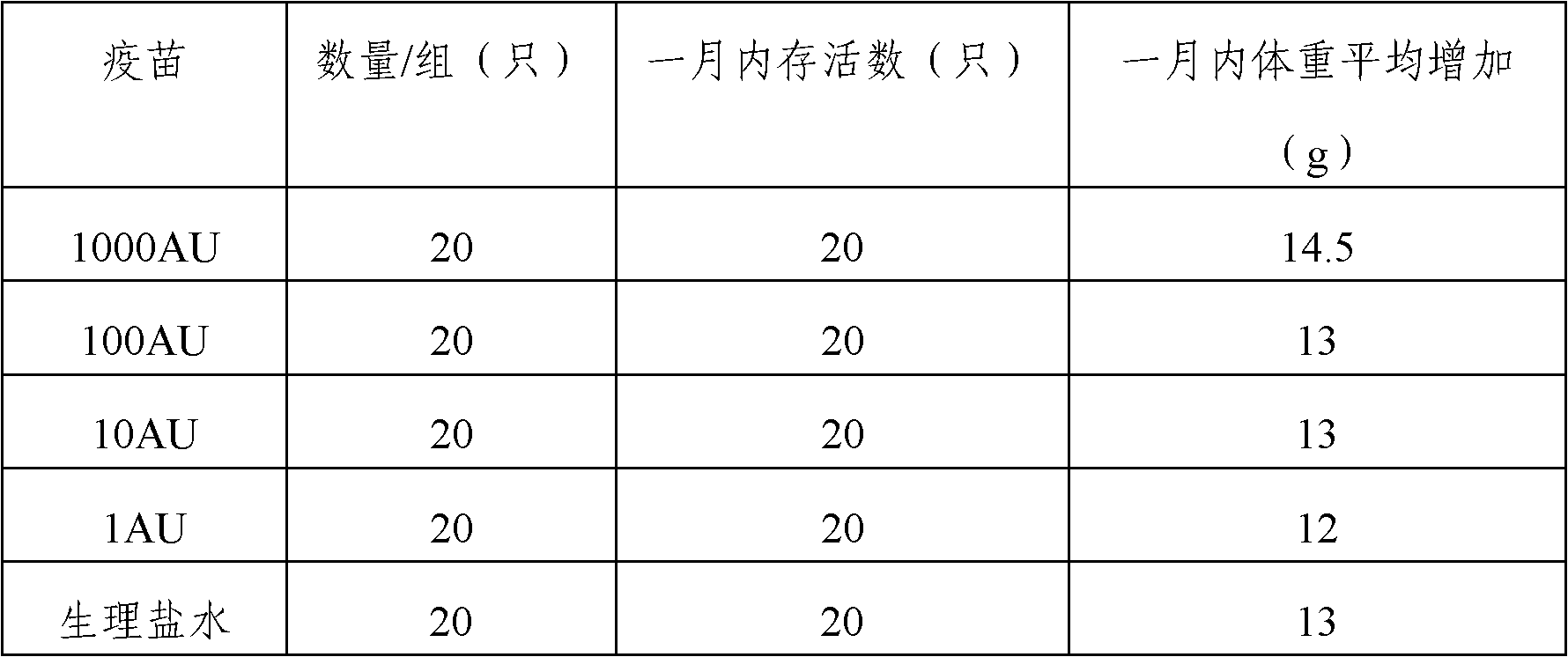Injectable artemisia pollen allergen vaccine and preparation method thereof
An allergen and pollen technology, applied in the directions of allergen antigen components, respiratory system diseases, skin diseases, etc., can solve the problems of long treatment period and insignificant curative effect, and achieves short treatment period, reduced medical burden, and quick effect. Effect
- Summary
- Abstract
- Description
- Claims
- Application Information
AI Technical Summary
Problems solved by technology
Method used
Image
Examples
Embodiment 1
[0054] Example 1 Preparation of Artemisia grandis pollen allergen stock solution
[0055] 1) Collect the pollen of Artemisia grandis through mechanical (vacuum cleaner) collection or hydroponics, and then use a 300-mesh sieve to remove impurities such as dust, and conduct purity testing, morphological and molecular biology identification on the collected pollen.
[0056] 2) Add the pollen obtained in 1) to acetone at a volume ratio of 1:5, and degrease under intermittent stirring at room temperature for 3 hours each time.
[0057] 3) Add 1,000 g of defatted Artemisia grandis pollen to 25,000 ml of 200 mM pH 8.0 disodium hydrogen phosphate-sodium dihydrogen phosphate buffer at a feed ratio of 1:25 (W:V), and stir at 4°C for 24 hours.
[0058] 4) Centrifuge the extracted extract at 6000rpm at 4°C for 15min. Take the supernatant after centrifugation at 8000rpm at 4°C for 30min.
[0059] 5) Clarify and filter the centrate after centrifugation with an 8 μm filter membrane, and th...
Embodiment 2
[0062] Example 2 Preparation of Artemisia annua pollen allergen stock solution
[0063] 1) The pollen of Artemisia annua was collected by mechanical (vacuum cleaner) collection or hydroponic method, and then impurities such as dust were removed using a 300-mesh screen, and the collected pollen was tested for purity, morphological and molecular biological identification.
[0064] 2) Add the pollen obtained in 1) to acetone at a volume ratio of 1:5, and degrease under intermittent stirring at room temperature for 3 hours each time.
[0065] 3) Add 1,000 g of defatted Artemisia annua pollen to 25,000 ml of 200 mM pH 8.0 disodium hydrogen phosphate-sodium dihydrogen phosphate buffer at a feed ratio of 1:25 (W:V), and stir at 4° C. for 24 hours.
[0066] 4) Centrifuge the extracted extract at 6000rpm at 4°C for 15min. Take the supernatant after centrifugation at 8000rpm at 4°C for 30min.
[0067] 5) Clarify and filter the centrate after centrifugation with an 8 μm filter membrane...
Embodiment 3
[0070] Example 3: Preparation of mugwort pollen allergen stock solution
[0071] 1) Collect mugwort pollen by mechanical (vacuum cleaner) collection or hydroponics, and then use a 300-mesh sieve to remove impurities such as dust, and conduct purity testing, morphological and molecular biology identification on the collected pollen.
[0072] 2) Add the pollen obtained in 1) to acetone at a volume ratio of 1:5, stir intermittently at room temperature for degreasing, each time for 3 hours, until the supernatant acetone is colorless after degreasing, and dry the degreasing solid naturally until there is no smell of acetone After weighing.
[0073] 3) Add 1000 g of degreased mugwort pollen to 25000 ml of 200 mM disodium hydrogen phosphate-sodium dihydrogen phosphate buffer at a feed ratio of 1:25 (W:V), and stir at 4° C. for 24 hours.
[0074] 4) Centrifuge the extracted extract at 6000rpm at 4°C for 15min. Take the supernatant after centrifugation at 8000rpm at 4°C for 30min.
...
PUM
 Login to View More
Login to View More Abstract
Description
Claims
Application Information
 Login to View More
Login to View More - R&D
- Intellectual Property
- Life Sciences
- Materials
- Tech Scout
- Unparalleled Data Quality
- Higher Quality Content
- 60% Fewer Hallucinations
Browse by: Latest US Patents, China's latest patents, Technical Efficacy Thesaurus, Application Domain, Technology Topic, Popular Technical Reports.
© 2025 PatSnap. All rights reserved.Legal|Privacy policy|Modern Slavery Act Transparency Statement|Sitemap|About US| Contact US: help@patsnap.com



